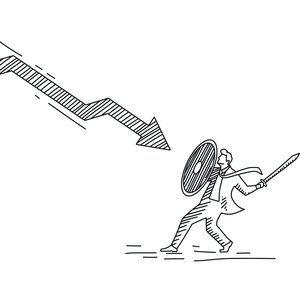
Joseph Kennedy, Sr., sold the stocks he owned before the 1929 stock market crash and made millions based on some stock tips from a shoeshine boy. Kennedy figured if the market was popular enough for a shoeshine boy to talk about it, the speculative bubble was too big and about to burst. It’s useful to ponder the 1929 stock market crash, learn from past mistakes and determine whether new and different bubbles will burst.
Before the Crash
People were happy and prosperous in the 1920s, which is the reason its moniker became “Roaring.” World War I was over, and many people were buying cars and other consumer goods. Many folks thought the stock market could do nothing but go up – and in the years between 1924 and 1929, it did. Because the stock market was experiencing the longest bull market in its history, everyone was getting into the act. Stocks weren’t going up because of company performance but by the sheer optimism of investors, causing serious overvaluation.
Ignoring the Signs
Not many people noticed the signs the crash was coming – or if they did, they ignored them. Almost two months before the crash, steel production was down, car sales were waning, fewer homes were being built and some banks had already failed. If people commented negatively on the economy or the stock market, they were discredited.
Cause of the Crash
Folks, in large numbers, were buying stocks on margin – borrowing money from banks to buy the stocks. In those days, people could put down 10 percent of the stock’s purchase price to buy; nowadays, it takes 50 percent. People were in for a rude awakening to discover that stocks can go down, and on Thursday, Oct. 23, 1929, stocks plummeted. There was a mad rush to sell when the news hit the streets. Brokers called in their margins, and when people couldn’t come up with the cash, more stocks were sold. The following Monday and Tuesday are called “Black Monday” and “Black Tuesday” because massive selling was occurring across the board. Not only did investors who bought stocks on margin lose big, so did the banks that lent the money to them.
Run on the Banks
People rushed to the banks in a panic to try and withdraw their funds, only to find that banks were not able to collect on money they lent people who invested in the stock market, and that the banks also invested depositors’ money in the market. Banks could not raise enough money to pay their depositors, and hundreds of them failed. Many depositors lost everything. By 1933, when Franklin D. Roosevelt was elected president, the banks were mostly nonfunctional.
The Great Depression
People were too poor to buy stock, and they had no confidence in the system anyway; many lost their savings when the banks failed. Businesses could not grow because no one was investing in the stock market, and because they couldn’t get loans. The Great Depression set in and lasted more than 10 years. Unemployment reached 25 percent of the workforce. Measures were taken to help regain consumer confidence in the banking system: Commercial banks were no longer able to invest depositors’ money in the stock market, and the Federal Deposit Insurance Corporation was set up to insure depositors’ fund in case the banks should fail again.
Evaluating Market Trends
Since 1926, there have been approximately eight bear markets of at least 3 months in length, and nine bull markets of, at minimum, 2.5 years in length. On average, bear markets tends to last approximately 1.4 years, while bull markets are noticeably longer, averaging 9.1 years in length. This information can be helpful when assessing current trends and attempting to predict future market movements.
References
Writer Bio
Laura Agadoni has been writing professionally since 1983. Her feature stories on area businesses, human interest and health and fitness appear in her local newspaper. She has also written and edited for a grassroots outreach effort and has been published in "Clean Eating" magazine and in "Dimensions" magazine, a CUNA Mutual publication. Agadoni has a Bachelor of Arts in communications from California State University-Fullerton.

